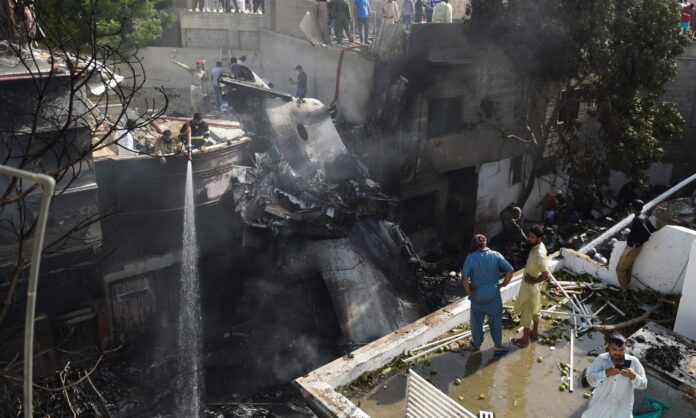PIA lost its Airbus 320 plane registered as AP-BLD on 22 May 2020, resulting in the tragic death of all 99 occupants except for two survivors. This marked the second fatal plane crash within a span of three years, shedding light on the airline’s internal affairs, which were already beleaguered and anticipated.
The crash occurred at a challenging time for the airline industry, as the COVID-19 outbreak had severely impacted air travel, leading to a significant decline in capacity and financial losses amounting to $315 billion worldwide. PIA, already struggling financially, faced further turbulence following the air crash.
While air travel is generally considered safe, accidents like this serve as a reminder of the catastrophic consequences that can occur when incidents do happen.
Preliminary investigations into the crash revealed a series of shortcomings, from the captain’s violation of standard operating procedures to the questionable response of the CEO, Mr. Arshad Malik, during his initial media appearance. These incidents exposed a lack of cohesion and coordination at all levels of the organization, painting a picture of a road transport company rather than an airline. Unfortunately, this accident followed a pattern of previous disasters that had similar underlying causes.
It appears that the pilot failed to extend the landing gear at the required altitude during the approach. The role of the Air Traffic Control (ATC) also came under scrutiny, as they should have been more vigilant and dutiful in their job, especially considering the reduced air traffic during that period. The lack of professional communication between the pilot and the ATC raises concerns about their coordination.
Furthermore, evidence from flightradar24 indicated that the pilot’s approach altitude for landing at Karachi airport was higher than usual. Just ten miles away from the runway, the aircraft was at a height of 7000 ft instead of the required 3000 ft. The pilot’s response to the ATC’s concern about the abnormal height was dismissive, indicating a potential oversight or complacency.
Several questions arose regarding why the ATC controllers were unaware of the aircraft’s technical fault and why the pilot made a rash decision to override standard procedures. With extensive experience flying A-320 aircraft, the pilot should have prioritized saving lives rather than deviating from established protocols. The multiple failed attempts to land and subsequent damage to the engines highlight the consequences of overconfidence and shortcuts in procedural compliance.
The pilots’ union, PALPA, which holds significant power within PIA, has been known to shield its members from accountability. They employ tactics such as blackmail and leveraging public sentiment to influence decision-making processes. Such practices hinder progress and compromise safety.
The government’s blind spot in effectively managing PIA as a commercial business entity has perpetuated the airline’s woes. Political interference, nepotism, and unprofessional leadership have resulted in overstaffing, financial mismanagement, and a rotten organizational culture. PIA has become a means of providing employment to political supporters, rather than functioning as a viable and competitive airline.
To address these challenges and rebuild PIA, several crucial steps must be taken. Firstly, the airline should be freed from political interference by declaring it a private entity and subjecting it to strict monitoring and control by the Ministry of Aviation and civil aviation authority. PALPA and other trade unions within the organization should be permanently banned to eliminate their negative influence.
A comprehensive restructuring of management and hierarchies, accompanied by a system of rigorous accountability, is necessary. PIA’s technical, management, and operational expertise, which have benefitted start-up airlines worldwide, must be implemented within the organization itself. The pilots and maintenance engineers should undergo retraining to emphasize the importance of adhering to standard operating procedures and prioritizing safety.
Transferring ownership to financially credible entrepreneurs, in collaboration with a reputable foreign airline, can infuse fresh investment and expertise to turn PIA into a profitable and competitive carrier. Strict adherence to SOPs, thorough rectification of technical faults, and continuous training programs will be essential in preventing future tragedies.
The transformation of PIA requires instilling a culture of ownership and responsibility among all stakeholders, from pilots and engineers to departmental leaders and executives. By embracing these changes and focusing on safety and professionalism, PIA can regain its lost glories and become a successful airline once again.




